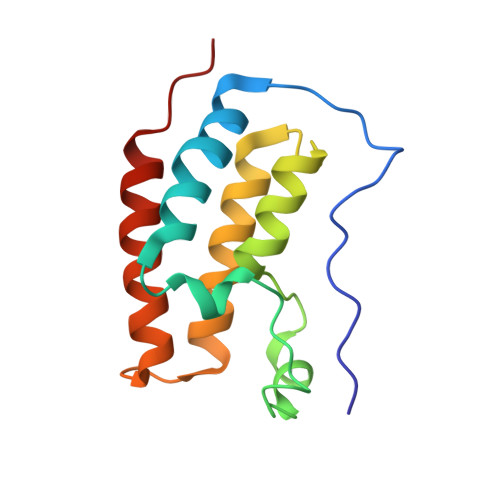Potent and Selective Bivalent Inhibitors of Bet Bromodomains
Waring, M.J., Chen, H., Rabow, A.A., Walker, G., Bobby, R., Boiko, S., Bradbury, R.H., Callis, R., Clark, E., Dale, I., Daniels, D.L., Dulak, A., Flavell, L., Holdgate, G., Jowitt, T.A., Kikhney, A., Mcalister, M., Ogg, D., Patel, J., Petteruti, P., Robb, G.R., Robers, M.B., Saif, S., Stratton, N., Svergun, D.I., Wang, W., Whittaker, D., Wilson, D.M., Yao, Y.(2016) Nat Chem Biol 12: 1097
- PubMed: 27775716
- DOI: https://doi.org/10.1038/nchembio.2210
- Primary Citation of Related Structures:
5AD2, 5AD3 - PubMed Abstract:
Proteins of the bromodomain and extraterminal (BET) family, in particular bromodomain-containing protein 4 (BRD4), are of great interest as biological targets. BET proteins contain two separate bromodomains, and existing inhibitors bind to them monovalently. Here we describe the discovery and characterization of probe compound biBET, capable of engaging both bromodomains simultaneously in a bivalent, in cis binding mode. The evidence provided here was obtained in a variety of biophysical and cellular experiments. The bivalent binding results in very high cellular potency for BRD4 binding and pharmacological responses such as disruption of BRD4-mediator complex subunit 1 foci with an EC 50 of 100 pM. These compounds will be of considerable utility as BET/BRD4 chemical probes. This work illustrates a novel concept in ligand design-simultaneous targeting of two separate domains with a drug-like small molecule-providing precedent for a potentially more effective paradigm for developing ligands for other multi-domain proteins.
Organizational Affiliation:
AstraZeneca, Alderley Park, UK.















